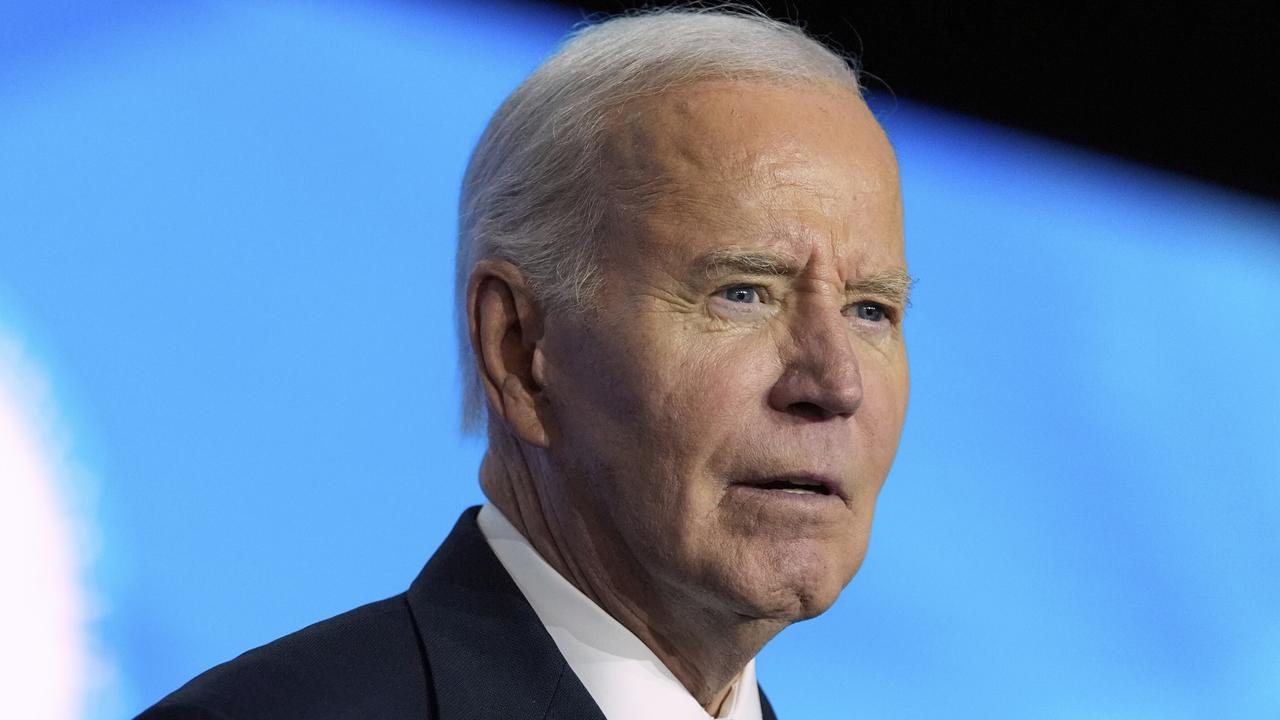Donald Trump announces Israel-Hamas ceasefire hours before official White House statement
Incoming US President Donald Trump has made a major claim this morning – and one key detail may just prove him right after all.

The threat of “all hell breaking loose” – or the result of persistent diplomatic persuasion?
The ink is barely dry on a ceasefire agreement between Israel and the Palestinian terrorist group Hamas after more than a year of bitter fighting.
But why would a deal essentially the same as that proposed eight months ago be signed now?
US President Joe Biden this morning proclaimed what he hopes will be the crowning moment of his career in the dying hours of his tenure at the White House: “Today, after many months of intensive diplomacy by the United States, along with Egypt and Qatar, Israel and Hamas have reached a ceasefire and hostage deal”.
President-elect Donald Trump, set to formally take office on January 20, hopes the deal will be seen as evidence his promises to solve many global crises “on Day One” of his return to office have been substantiated: “We have a deal for the hostages in the Middle East. They will be released shortly. Thank you!”

So, after months of reports that the ceasefire agreement was on the cusp of being accepted, why now?
“Biden administration officials can, and will, claim that their efforts ended a bloody war that tarnished the outgoing president’s legacy among many Democrats,” says Center for Strategic and International Studies (CSIS) Professor Daniel Byman.
“However, even if the ceasefire reflects the months of negotiations and constant proposals put forward by Biden officials, credit will go to President-elect Donald Trump.”
But that credit could equally turn into disgrace.
The ceasefire deal is uncertain.
Both sides have a history of breaking deals after using them to their own advantage.
The ceasefire deal is sketchy.
Few details have been settled beyond the handover of about 33 hostages and a temporary, six-week pause in fighting.
Will Israel withdraw its troops or seek to occupy Gazan territory? Will Hamas provide adequate assurances that no further terror attacks are pending?
The ceasefire deal is political.
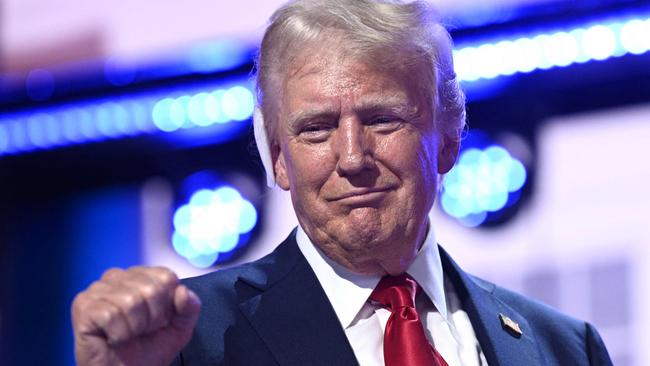
Hamas has seen almost all of its senior leadership killed and is struggling to balance the need to save face and convince the Palestinian people of its relevance. And Israel’s Prime Minister Benjamin Netanyahu will now have to face questions over how the surprise attack succeeded.
The ceasefire deal is both a legacy and a precursor.
“Who deserves credit for this, Mr President, you or Trump?” a reporter called out during this morning’s announcement.
Mr Biden replied: “Is that a joke?”
Credit where credit is due
Months of on-again, off-again, back-and-forth negotiations have borne fruit.
But only the intense pressure – and uncertainty – of a US presidential handover appears to have compelled action.
Atlantic Council Middle East security director Jonathan Panikoff told US media the combination of patient discussions and Mr Trump’s threats to Hamas and “cajoling” of Mr Netanyahu is what produced results.
“The ironic reality is that at a time of heightened partisanship even over foreign policy, the deal represents how much more powerful and influential US foreign policy can be when it’s bipartisan,” he said.
The “framework” ceasefire agreement is essentially the same as that presented in May last year.
What’s changed is Hamas’ weakened position.

“The organisation is devastated,” says Professor Byman.
“Israel claims that it has killed 17,000 Hamas fighters, destroyed much (though probably not a majority) of Hamas’ tunnel network and other infrastructure, and killed many of Hamas’ senior leaders. This is not an empty boast.”
What’s also changed is Mr Netanyahu’s grip on power.
“Israel is also exhausted by war, and the Gaza operations have, for many months now, been yielding diminishing returns,” Byman adds.
“Yoav Gallant, Israel’s former defence minister, admitted months ago that Israel no longer had any real military mission in Gaza. The international outrage Israel has faced … may have long-term costs.”
Essentially, analysts argue, the time is ripe for a deal.
And almost everyone can declare victory and move on.
Trump’s pre-emptive victory?
The ceasefire deal is a win for Trump.
“This EPIC ceasefire agreement could have only happened as a result of our Historic Victory in November, as it signalled to the entire World that my Administration would seek Peace and negotiate deals to ensure the safety of all Americans, and our Allies,” he said in a Truth Social post.

His special envoy, Steve Witkoff, has been working with the Biden administration negotiating team since shortly after the November elections.
Today, The Washington Post quotes an anonymous diplomat insider of the ceasefire negotiations as saying the deal had been reached in part due to the influence of the president-elect: “(It was) the first time there has been real pressure on the Israeli side to accept a deal”.
Mr Trump’s statement pre-empted the official White House ceasefire announcement by several hours.
“Trump will bask in the accomplishment, proclaiming that he instantly achieved what Biden could not in over a year,” says Professor Byman.
And allowing him to do so appears to be in Israel’s favour.
“Politically, the deal enables Israel to score points with the new administration, which had promised to end the war upon taking office,” he adds.
And Mr Trump’s threat that “all hell will break out” will not need to come to pass.
“What that meant in practice was unclear, but it certainly sounded scary,” Byman states.
“He also put significant pressure on Netanyahu to accept a deal, according to Israeli news reports.”
A jubilant Trump vowed to “continue to work closely with Israel and our Allies to make sure Gaza NEVER again becomes a terrorist safe haven …”
“We will continue promoting PEACE THROUGH STRENGTH throughout the region, as we build upon the momentum of this ceasefire to further expand the Historic Abraham Accords. This is only the beginning of great things to come for America, and indeed, the World!”
Biden’s last laugh?
The ceasefire deal is a breakthrough.
President Biden told assembled media this morning that it would remain in place for as long as Israel and Hamas remained at the negotiating table to thrash out a long-term truce.
The proposal’s acceptance by Hamas and Prime Minister Netanyahu’s government comes too late to advantage his defeated Democrat Party.
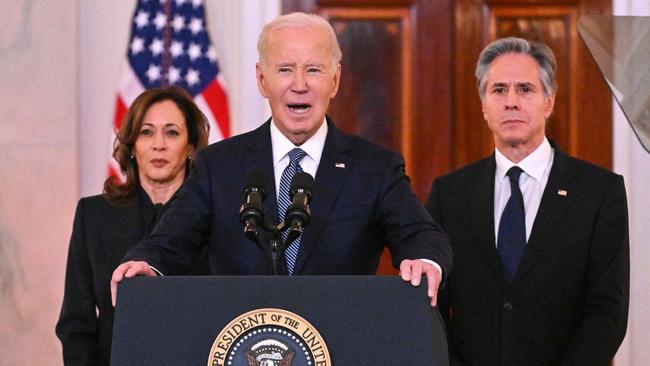
And Mr Biden’s administration – and Vice-President Kamala Harris’ 2024 presidential campaign – has been dogged by internal disputes over its handling of the Gaza crisis. Factions are split between maintaining uncompromised support for Israel and condemning its brutal bombing campaign on civilian homes, infrastructure and refugee camps.
Now, the future of both the Palestinian and Israeli people rests in another president’s hands.
Today, after many months of intensive diplomacy by the United States, along with Egypt and Qatar, Israel and Hamas have reached a ceasefire and hostage deal.
— President Biden (@POTUS) January 15, 2025
My diplomacy never ceased in their efforts to get this done – I will speak more about this soon. pic.twitter.com/iETWhGXEGA
Mr Biden insisted his negotiators and President-elect Trump’s team are “speaking as one”.
But he emphasised the ceasefire terms were “the exact framework of the deal I proposed back in May”.
“This deal was developed and negotiated under my administration, but its terms will be implemented, for the most part, by the next administration,” he conceded.
“I knew this deal would have to be implemented by the next team, so I told my team to co-ordinate closely with the incoming team to make sure we’re all speaking with the same voice, because that’s what America’s presidents do.”
Some have drawn comparisons between Mr Biden’s position and that of President Jimmy Carter.
Mr Carter secured the release of 52 American hostages from Iran in 1981. The handover was conducted the day President Ronald Reagan took office and was widely regarded as helping establish his image as a strong leader.
Netanyahu’s precarious position
The ceasefire deal is a poisoned chalice for Israel’s Prime Minister.
Many long-term questions remain unanswered. And those answers will determine both his personal fate and that of his tumultuous coalition government.
“For Israeli Prime Minister Benjamin Netanyahu and his government, ending the war has proven politically difficult,” says Professor Byman.
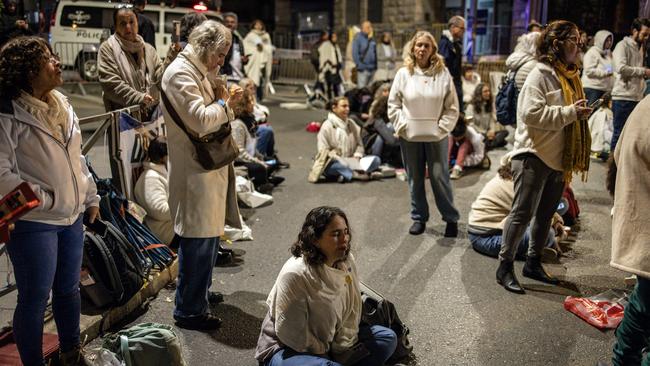
“Netanyahu’s extreme right-wing coalition has favoured an unbending policy toward Hamas, seeking its utter destruction. Netanyahu has embraced this line, but what it means in practice is unclear. His cabinet must still approve the deal.”
Last night, his office initially denied reports a deal had been reached. And the Israeli Defence Force (IDF) stated it had struck more than 40 “terrorist targets” across the Gaza Strip.
Over the past day, the Israeli Air Force carried out airstrikes on over 50 targets in the Gaza Strip, the military says, including against groups of operatives from the Hamas and Palestinian Islamic Jihad terror groups.
— Emanuel (Mannie) Fabian (@manniefabian) January 15, 2025
One of the strikes, launched overnight, targeted a… pic.twitter.com/qkKCU1ALVv
“Netanyahu’s own political difficulties – he is currently on trial for corruption – put him in a vulnerable position, increasing the risk of any move that his coalition members do not support,” Professor Byman adds.
“Moreover, with a ceasefire, there will be a reckoning for the failures of October 7 itself, including Netanyahu’s own role in allowing Hamas to build up and prioritising other theatres over Gaza.”
Israel is itself torn over the conduct of the war.
Many seek a political deal to secure the release – and lives – of the surviving hostages.
And the IDF is reportedly struggling to maintain the morale of reservists exhausted by more than a year of fighting, and recruit replacements from among both hard-line Jewish sects and the general populace.
And far-right elements of Mr Netanyahu’s coalition are determined to hold him to his word.
They want a lasting military presence in Gaza – especially in a new corridor (the Philadelphi Corridor) dividing north from south. They also want to occupy Gaza’s border with Egypt. Some even want Israeli settlers to be allowed into the occupied territory.
And Hamas still exists.
“Despite inflicting repeated blows on Hamas, Israel has done nothing to ensure that there is a successor to Hamas in Gaza that can displace it in the long term,” notes Professor Byman. “As a result, the group may slowly regenerate, regaining at least some influence in Gaza.”
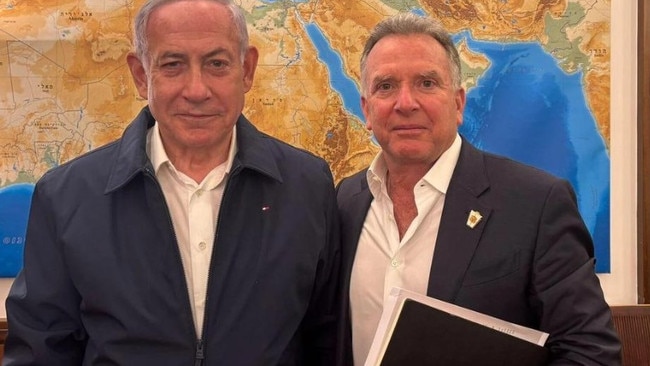
Hamas’ Hunger Games
The ceasefire deal may be the Hamas terrorist-political movement’s last chance for survival.
Its political leader, Ismail Haniyeh, was assassinated in Iran.
Its military leader, Mohammed Deif, was killed in an air strike.
And the chief strategist behind the October 7 raid, Yahya Sinwar, was killed in a tank attack on his hide-out.
“Aside from these losses, Hamas’s popularity is falling,” Professor Byman states.
“Gaza is in ruins, and most Gazans, who once supported the attack on Israel, now consider it a mistake.”
Its main ally, Hezbollah – and through it, Iran – has also capitulated in the face of relentless Israeli air and ground assaults.
Now, its new leader, Khalil al-Hayya, has reportedly handed over a signed ceasefire agreement to Qatar and Egypt negotiators at a Doha meeting.
After 15 months of war, almost 47,000 Gazans have been killed in the fighting. Israel claims to have killed 17,000 militants.
But the Hamas movement is still fighting for survival.
“Hamas feared that a temporary pause in fighting in exchange for a hostage release, as opposed to a permanent ceasefire, would simply lead Israel to redouble its campaign once its own people were out of harm’s way,” Professor Byman observes.
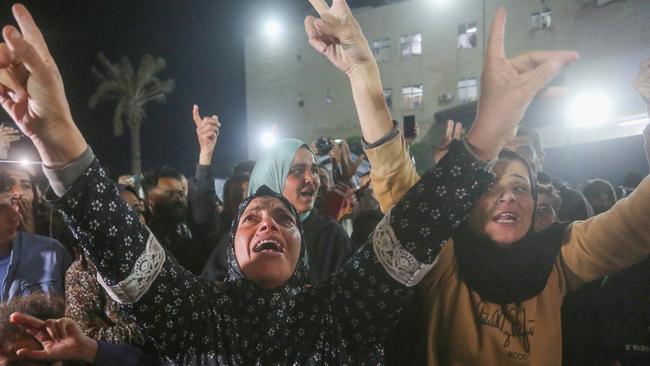
There is still no plan for who will govern Gaza after the war.
Israel says it is willing to work with any Palestinian not affiliated in any way with Hamas or the Palestinian Authority. It has, however, not specified anyone meeting that criteria.
Hamas, for its part, says it will attack anyone who accepts Israeli support.
US negotiators have attempted to bypass this standoff through talks with other Arab countries, including Egypt and Qatar. As a reward for accepting such intervention, Israel will be granted “normalised” relations with regional giant Saudi Arabia.
Meanwhile, Hamas still exists.
“If Hamas starts to regain power in parts of Gaza, Israeli leaders may strike to remove it, past promises be damned,” notes Professor Byman.
“Hamas, for its part, may conduct attacks on remaining Israeli forces in Gaza or on any international or Palestinian group that tries to displace it.
“None of this may formally restart the war, but it will hinder aid organisations and efforts to rebuild the Gaza Strip.”
Jamie Seidel is a freelance writer | @jamieseidel.bsky.social
Originally published as Donald Trump announces Israel-Hamas ceasefire hours before official White House statement




